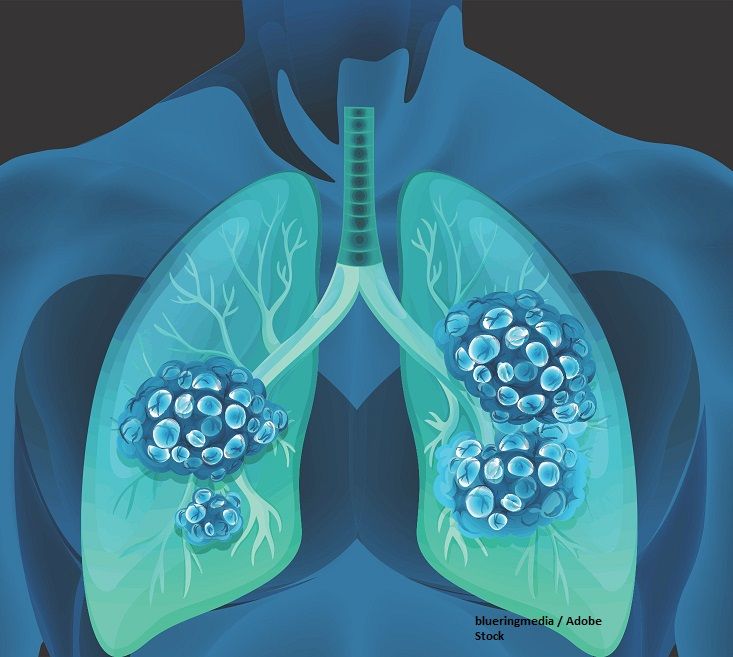Cemiplimab/Chemo Receives Canadian Approval in Advanced NSCLC
Patients in Canada who have advanced non–small cell lung cancer can now receive cemiplimab plus chemotherapy as a first-line treatment following Health Canada’s approval of the regimen.
Health Canada has issued a notice of compliance for cemiplimab-rwlc (Libtayo) in combination with platinum-based chemotherapy in the first-line treatment of adult patients with advanced non–small cell lung cancer (NSCLC), according to a press release from Sanofi Canada and Regeneron.1
“The approval of this new indication of [cemiplimab] highlights continued progress in first-line treatment options for [patients] impacted by advanced lung cancer in Canada,” according to an expert from University of British Columbia.

Supporting data for this approval came from the phase 3 EMPOWER-Lung 3 trial (NCT03409614), in which investigators assessed cemiplimab plus platinum-doublet chemotherapy as first-line treatment for stage III or IV NSCLC without EGFR, ALK, or ROS1 aberrations.
According to data published in Nature Medicine, the median overall survival (OS) was 21.9 months (95% CI, 15.5-not evaluable [NE]) with cemiplimab plus chemotherapy vs 13.0 months (95% CI, 11.9-16.1) with placebo plus chemotherapy.2 Additionally, the estimated 12-month OS rates were 65.7% (95% CI, 59.9%-70.9%) vs 56.1% (95% CI, 47.5%-63.8%) in each respective arm.
“The approval of this new indication of [cemiplimab] highlights continued progress in first-line treatment options for [patients] impacted by advanced lung cancer in Canada,” Barbara Melosky, MD, FRCPC, clinical professor of Medicine at Unversity of British Columbia, said in the press release. “The phase 3 EMPOWER-Lung 3 trial showed significant improvements across primary and key secondary end points, including [OS] in the cemiplimab plus chemotherapy arm.”
In the phase 3 EMPOWER-Lung 3 trial, patients were randomly assigned 2:1 to receive 350 mg of cemiplimab (n = 312) or placebo (n = 154) every 3 weeks in combination with 4 cycles of platinum-doublet chemotherapy.
Treatment-emergent adverse effects (TEAEs) occurred in 95.8% of patients who received cemiplimab plus chemotherapy. Additionally, 43.6% of those in the cemiplimab arm had grade 3 or higher TEAEs, the most common of which included anemia (9.9%) and neutropenia (5.8%).
The FDA approved cemiplimab plus chemotherapy as first-line treatment for patients with advanced NSCLC in November 2022.3 Data from the phase 3 EMPOWER-Lung 3 trial supported the FDA’s approval.
References
- Libtayo® (cemiplimab) in combination with chemotherapy now approved in Canada for the first-line treatment of advanced non-small cell lung cancer. News release. Sanofi Canada and Regeneron. May 1, 2023. Accessed May 2, 2023. bit.ly/42ee6RU
- Gogishvili M, Melkadze T, Makharadze T, et al. Cemiplimab plus chemotherapy versus chemotherapy alone in non-small cell lung cancer: a randomized, controlled, double-blind phase 3 trial. Nat Med. Published online August 25, 2022. doi:10.1038/s41591-022-01977-y
- FDA approves cemiplimab-rwlc in combination with platinum-based chemotherapy for non-small cell lung cancer. News release. FDA. November 8, 2022. Accessed May 2, 2023. https://bit.ly/3WO0BX1
Newsletter
Stay up to date on recent advances in the multidisciplinary approach to cancer.